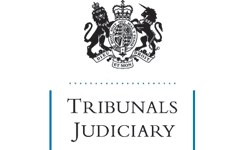|
Notes:
|
Personal capability assessment - activity 14: “remaining conscious” - whether amendment to definition of activity validly made
The claimants had their awards superseded after scoring insufficient points to satisfy the personal capability assessment. The claimant in CSIB/803/2005 appealed to a tribunal, contending that she was entitled to 15 points under descriptor 14(b) because she had “an involuntary episode of lost or altered consciousness at least once a week” due to severe headaches. She relied on R(IB) 3/04, submitting that the amendment made in 1996 to paragraph 14 of the Schedule to the Social Security (Incapacity for Work) (General) Regulations 1995, whereby the terms of Activity 14 (“[r]emaining conscious”) had been qualified by the phrase “without having epileptic or similar seizures during waking moments”, had been invalid. The claimant in CSIB/818/2005 submitted to the tribunal that he suffered from serious headaches, loss of concentration and mild dizziness. According to his medical report, his prescribed medication tended to make him sleepy, particularly in the mornings. His representative placed some reliance on Activity 14 although it was not at the forefront of his case and was not mentioned in the tribunal’s statement of reasons. Both appeals were dismissed. On the claimants’ further appeals, a Tribunal of Commissioners was appointed to consider whether R(IB) 3/04 had correctly decided that, in the light of Howker v Secretary of State for Work and Pensions [2002] EWCA Civ 1632 (reported as R(IB) 3/03), the amendment to Activity 14 was invalid because, in a memorandum placed before the Social Security Advisory Committee by the Secretary of State its effect had been described as “neutral” when it was adverse to claimants.
Held, dismissing both appeals, that:
1. applying Howker, the relevant test of invalidity was not merely whether the label “neutral” was accurate but was whether the overall effect of all the material placed before the Committee was misleading and whether there was a real possibility that a different result would have happened had that irregularity not occurred (paragraphs 35 and 36);
2. the validity of the amendment could not be determined without consideration of its meaning and effect because a provision should, if possible, be construed so that it is valid and the material placed before the Committee was a legitimate aid to the construction of the amendment (paragraphs 38 and 39);
3. a person had an “episode of … altered consciousness” when he or she was no longer properly aware of his surroundings or his condition, so as to be incapable of any deliberate act (paragraphs 11 and 47);
4. “seizures” were involuntary, overwhelming and sudden and the phrase “similar seizures” was to be construed by reference to the similarity of the effects of the seizures to the effects of epileptic seizures, including the degree of suddenness of the loss or alteration of consciousness, but without consideration of whether the seizures were characterised by the discharge of cerebral neurones (paragraphs 11, 41, 42 and 56);
5. the legislation being construed in that way, the material placed before the Committee was not misleading and the amendment was valid (R(IB) 3/04 disapproved) (paragraphs 10, 52 and 58);
6. a Commissioner who has held a tribunal to have erred in law need refer the case to another tribunal only if he or she is not able properly to deal with any outstanding factual issues and, had the amendment been found to be invalid, the remaining issue in CSIB/818/2005 would have been largely a question of law which the Commissioners would have resolved themselves (paragraphs 66 to 69).
|
